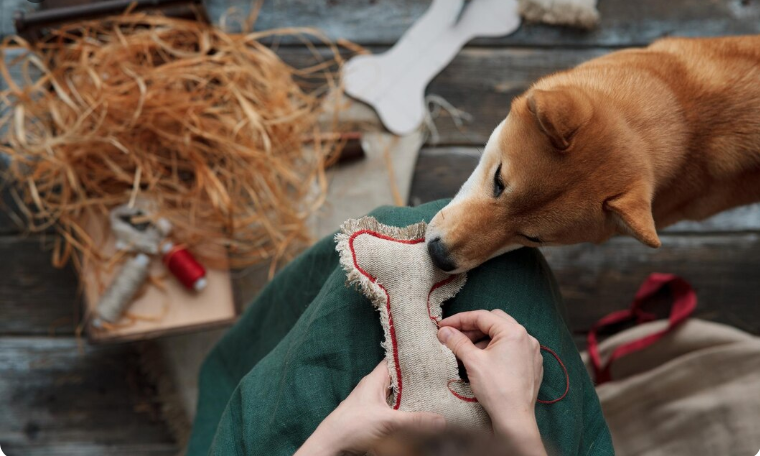
Grooming your dog at home is not just a way to save money on professional grooming services; it also helps build trust and improve the bond between you and your furry companion. Regular grooming keeps your dog clean, healthy, and happy. It also allows you to monitor for skin issues, fleas, ticks, or other health concerns early on. This comprehensive guide covers the best tools for at-home dog grooming, easy-to-follow grooming steps, and helpful tips to make the process enjoyable for both you and your pet.
Table of Contents
ToggleWhy DIY Dog Grooming Matters
Professional grooming can be expensive, and some dogs find it stressful to be handled by strangers in unfamiliar environments. At-home dog grooming allows you to create a low-stress, familiar setting for your pet. Additionally, routine grooming improves your dog’s comfort, promotes good hygiene, and strengthens your relationship.
Benefits include:
- Early detection of lumps, bumps, or skin issues
- Fewer tangles and mats
- Reduced shedding
- Clean ears and trimmed nails
- Lower grooming costs over time
Essential Grooming Tools for Every Dog Owner
Before you begin, make sure you have the following dog grooming supplies:
1. Dog Brush or Comb
Choose a brush suited to your dog’s coat type:
- Slicker brushes for long-haired or curly-coated dogs
- Bristle brushes for short-haired breeds
- Deshedding tools for heavy shedders
2. Dog Shampoo and Conditioner
Always use a pH-balanced dog shampoo. Human shampoos can irritate canine skin. For sensitive skin, opt for hypoallergenic formulas.
3. Nail Clippers or Grinders
Regular nail trimming prevents discomfort and joint issues. Use dog-specific nail clippers or a grinder with a guard for safety.
4. Grooming Scissors and Clippers
Use rounded-tip grooming scissors to trim fur near the eyes, paws, and sanitary areas. Electric clippers work best for full-body trims, especially for breeds like poodles and shih tzus.
5. Ear Cleaner
Use a vet-approved ear cleaning solution and cotton pads. Avoid using cotton swabs inside the ear canal.
6. Towels and Dryers
Towels work well for small dogs. For thicker coats, a pet-safe blow dryer on a low heat setting ensures fast, safe drying.
7. Styptic Powder
This stops bleeding if you accidentally cut a nail too short.
Step-by-Step Dog Grooming Routine
Here’s how to groom your dog at home, even if you’re a complete beginner:
Step 1: Brushing
Start by brushing your dog’s coat to remove tangles and mats. This also removes loose hair and debris. Always brush in the direction of hair growth.
Step 2: Bathing
Use lukewarm water and a dog-friendly shampoo. Wet your dog thoroughly and lather the shampoo gently from neck to tail. Avoid the eyes and ears. Rinse well to prevent residue buildup.
Optional: Apply a dog conditioner and rinse again.
Step 3: Drying
Dry with a clean towel or pet dryer. Ensure your dog is completely dry before moving on to trimming. Moist fur is harder to cut and may clog clippers.
Step 4: Nail Trimming
Trim nails cautiously. If unsure where the “quick” (blood vessel) is, trim just the tip. If bleeding occurs, apply styptic powder immediately.
Step 5: Ear Cleaning
Apply ear cleaner to a cotton pad and gently wipe the inside of the ear flap. Repeat with a fresh pad for each ear.
Step 6: Hair Trimming
Trim hair around the eyes, paws, and sanitary areas using grooming scissors. Use clippers for full-body trims, if needed.
Tips to Make DIY Grooming Easier
- Start early: Get puppies used to grooming from a young age.
- Use positive reinforcement: Offer treats and praise throughout the process.
- Go slow: Break sessions into short steps if your dog is anxious.
- Be consistent: Groom regularly to keep your dog comfortable and clean.
- Know your breed: Some dogs require frequent grooming; others less so.
Common Mistakes to Avoid
- Using human grooming tools
- Skipping regular nail trims
- Bathing without brushing first
- Rushing the process and causing stress
- Using human shampoo on dogs
Final Thoughts
At-home dog grooming doesn’t have to be intimidating. With the right tools, a calm approach, and regular practice, you can keep your dog looking and feeling their best. Grooming also provides an opportunity for quality bonding time while helping you spot early signs of health issues.